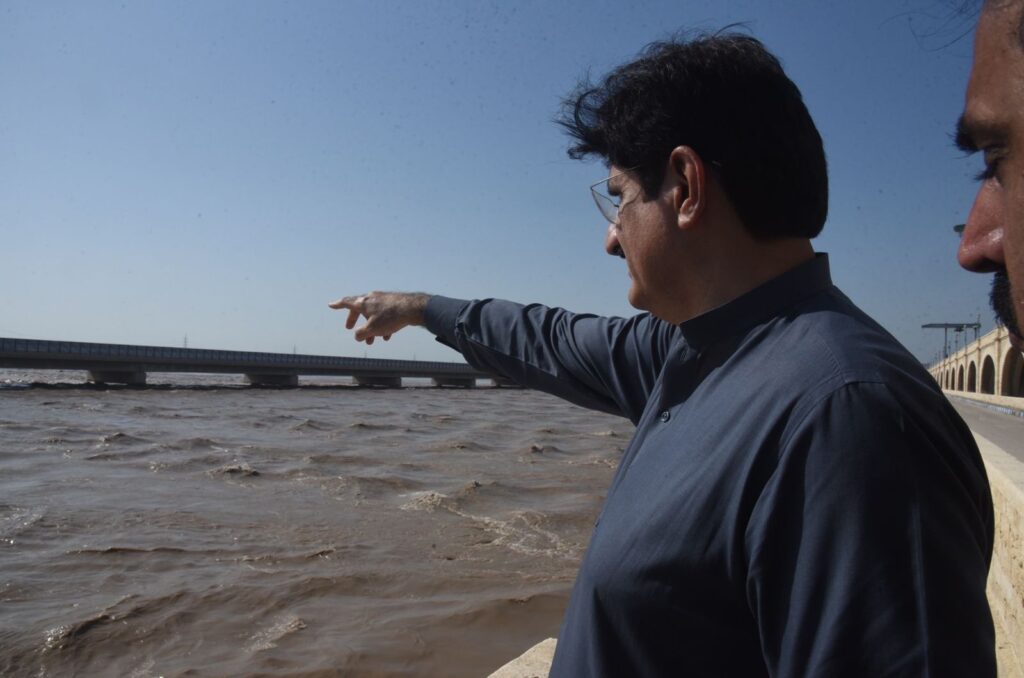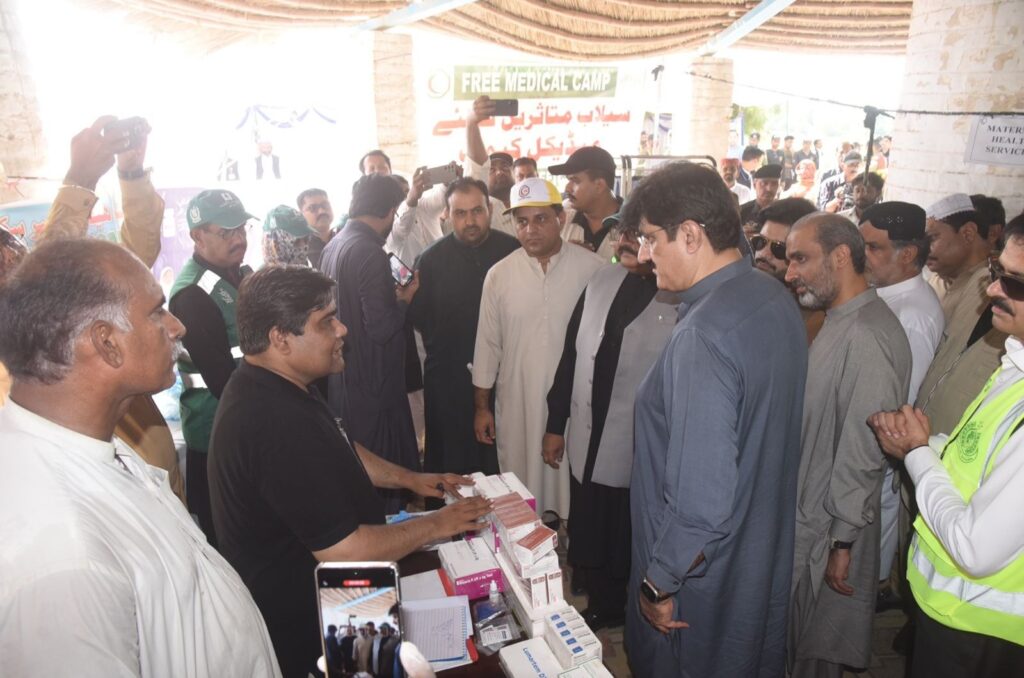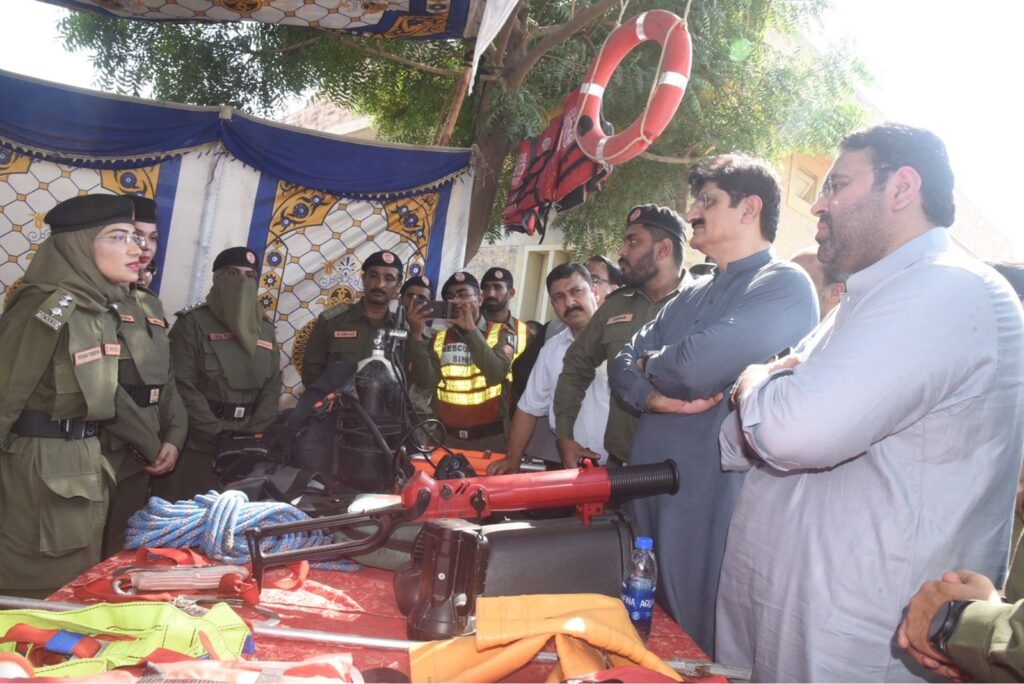Special Correspondent

Sukkur/Guddu: Sindh Chief Minister Syed Murad Ali Shah extensively toured flood-affected areas, including Sukkur and Guddu Barrages, relief camps, and villages, where he assured residents that their protection remains the government’s top priority. During his visit, he also unveiled Sindh’s upcoming Agriculture Emergency Plan, a major initiative aimed at boosting food security and supporting wheat cultivation.
Agriculture Emergency Plan and Wheat Reserves
The chief minister acknowledged a decline in Sindh’s wheat output from 4.2 million tons last year to 3.1 million tons but reassured the public that sufficient reserves are available until March 2026. He announced that Sindh’s Agriculture Emergency Plan, focused on enhancing wheat production, will be formally unveiled next week. “We are working on the plan and will announce it for wheat growers so that its cultivation could be improved,” Shah said.

Flood Situation and Government Preparedness
At Sukkur Barrage, Shah briefed the media on water levels and relief measures, reporting inflows of 650,000 to 700,000 cusecs—lower than the NDMA’s earlier forecast of up to 1.2 million cusecs. He said preparations had been made for higher flows, with irrigation teams deployed in Sukkur for two weeks of continuous monitoring. He emphasized three key objectives: saving lives, protecting infrastructure, and strengthening embankments. Embankments have been raised up to eight feet, vulnerable points are under round-the-clock watch, and casualties so far remain minimal and unrelated directly to flooding.
Relief Measures and Federal Government Support
The CM urged the federal government to provide direct assistance through the Benazir Income Support Programme (BISP) and called for international support, stressing that climate change is intensifying disasters in Sindh. He confirmed that the province already has adequate relief goods, medical camps, and vaccination drives for livestock. Since July, more than 107,000 animals have been vaccinated, while over 2,000 displaced people in Ali Wahan village alone have been rescued by Pakistan Navy and Rescue 1122 teams. Mobile medical dispensaries under PPHI are also active in evacuation zones.

Infrastructure Strengthening and Rehabilitation Projects
Shah personally inspected Sukkur Barrage, where water levels stood at 500,000 cusecs, classified as high flood. He was briefed by Chinese engineers on the installation of 16 new gates under the World Bank-supported Sindh Barrages Improvement Project. At Guddu Barrage, discharges were recorded at 627,908 cusecs, well within its 1.1 million cusecs capacity. Vulnerable embankments like Tori Bund and KK Bund are being fortified with nonstop monitoring. He also highlighted ongoing works at Dadu-Moro, Larkana-Sukkur, and Amri bridges to ensure transport connectivity.
Safe Evacuations and Call for Unity
In Kashmore, Shah praised the safe evacuation of nearly three million people and the strong performance of rescue teams. He reiterated Bilawal Bhutto Zardari’s call for an international appeal to assist victims. He also thanked communities for their resilience and unity during this crisis, while stressing the importance of continued vigilance. “Sindh has overcome many challenges before, and with unity and determination, we will overcome this natural calamity as well,” the CM said.

Conclusion
Murad Shah lauded Sukkur Barrage as an engineering marvel while acknowledging repair needs at certain gates. He reaffirmed his government’s commitment to protecting lives, safeguarding agriculture, and ensuring rehabilitation of flood-hit communities.























